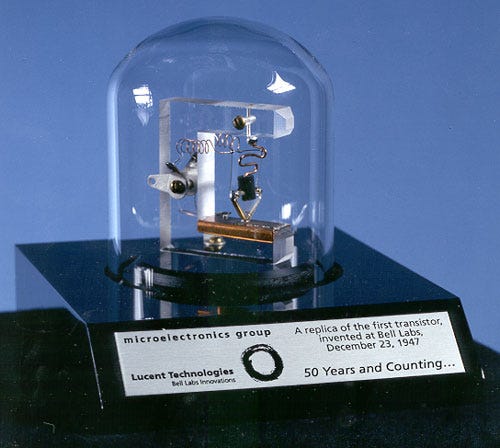The Idea Factory: Bell Labs and the Great Age of American Innovation
Or: The Rise and the Fall of Bell Labs
Bell Labs was the research and development arm of AT&T national telephone monopoly. It's considered one of the most successful research labs of all time, if not the most successful, responsible for the development of the transistor, laser, information theory, photovoltaic cells, cellular technology, the Unix operating system, the C and C++ programming languages, and many more. Nine Nobel prizes have been awarded for work completed at Bell Labs.
The Idea Factory shares all sorts of interesting information about the history of Bell Labs, the main characters in its history, and the story behind various inventions. But to me the most interesting questions are - What made them so successful? and Why did they stop being successful?. The book doesn't provide a single answer but does provide important hints.
Why Bell Labs succeeded
Real World Demand - The goal of Bell Labs was to make the American telephony system more efficient. Given the costs involved in setting up the telephony system, it made sense for AT&T to invest billions of dollars in optimizations that saved the company money. One anecdote in the book is that a new material for coating telephone poles, developed by a relatively small team, saved AT&T $2.5 billion, covering the operating costs of Bell Labs for a decade. Inventions like the transistor and the laser were built as ways to make telephony more efficient, even though it was clear that they will have many other applications.
Industrial Laboratory - Bell Labs was never a pure research facility. The teams of researchers and engineers worked closely together and the engineers made sure to involve the researchers when taking their inventions to market. Engineers often cherished the ability to work with the inventor of a system they were trying to turn into a product.
Technical Leadership - It appears that upper management at Bell Labs consisted of excellent technical leaders, admired by both employees and external stakeholders (AT&T, government, military).
Focus on the Task - Many Bell Labs employees came from academia or went on to positions in academia. You'd think that for researchers the university environment would be the default path but it seems that many Bell Labs employees enjoyed the fact that they didn't have to spend time on getting tenure or publishing papers but could simply focus on the scientific topic they cared most about.
Culture of Openness - Bell Labs was a liberal organization that didn't care much about the quirks of its employees, as long as they got the job done. Many employees were quite quirky.
Why Bell Labs stopped being successful
I think the answer here is pretty straightforward. Once there was no more money in US telecommunication innovation AT&T no longer had the incentive to invest in Bell Labs, and monopoly concerns prevented it from getting into computing when the field was young. By the mid 1980s Bell Labs was already a shell of its former self, in the 1990s it was spun off from AT&T, and today it's a random R&D division of Nokia.
All in all, The Idea Factory gives a good look into the history of Bell Labs and is interesting if you're interested in that kind of stuff. It is, though, a non-trivial 17.5 hour time investment on Audible, which is how I "read" it.



